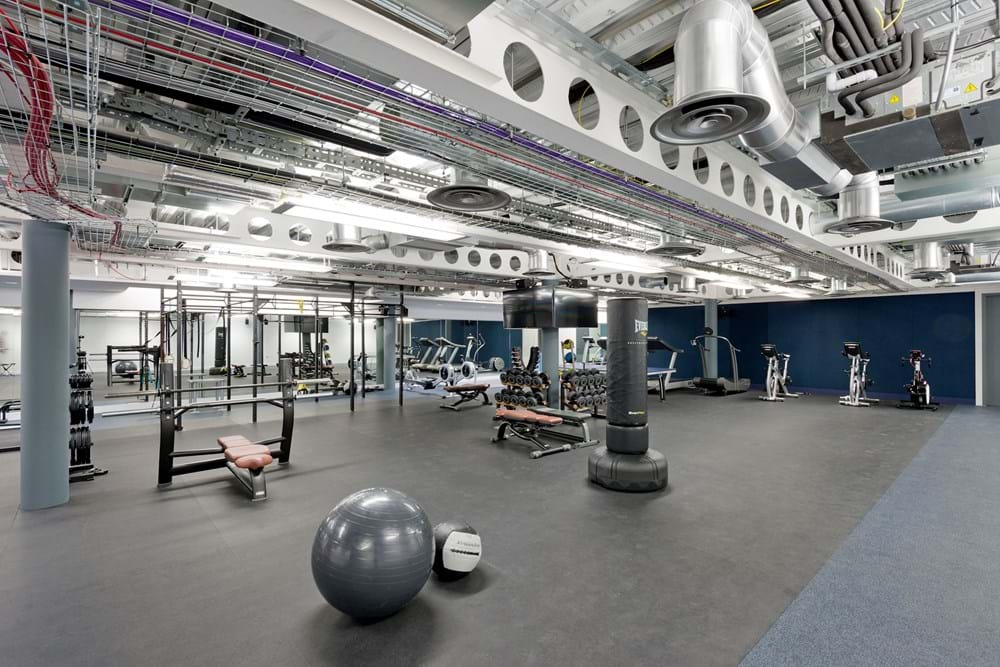Five top tips to boost employee wellbeing and productivity
Just under half of workers in the United Kingdom say that their employers currently do not have anything in place to improve their mental state. Here follows a handful of inexpensive tips to better workplace wellbeing and, as a result, boosting the bottom line.
1. Encourage socialising
Be honest: does your workplace do enough about employee wellbeing in the office – and if not, why not? According to Perkbox’s 2018 UK Workplace Stress Survey, almost half (46 per cent) of workers in the United Kingdom say their paymasters have nothing in place to help reduce employees’ stress levels and improve their mental wellbeing.
The report suggests that one in five UK workers experience “moderate- to high-levels” of work-related stress “several times a week”. When over 10 per cent of respondents’ state that stress causes them to take sick days, it is costly if wellbeing is ignored – in more ways than one.
Not only does a workplace that encourages organisation-wide socialising improve individual and collective morale, it also forges greater bonds between team members, building a community to safely voice concerns and monitor the mental wellbeing and health of colleagues.
Regular awards events, and the celebration of individuals’ achievements, will foster an inclusive vibe, but there are other small things you can do to boost social activity in the office – and they don’t need to break the bank. Some great office design ideas for encouraging socialising, that shouldn’t be dismissed are; table tennis tables or dart boards in the workplace.
Such inexpensive sporting objects activate socialisation right across a business – important for collaboration and the sharing of ideas – while teasing out a healthy competitiveness, which has been proven to improve productivity and overall wellbeing.
A foosball table area at Joseph Joseph
2. Work hard to raise physical activity of staff
Healthy body, healthy mind, runs the old adage – yet so many workplaces neglect this obvious truism. And it costs them in terms of sub-optimal employee wellbeing, poor motivation, and sick days.
Encouraging staff to raise their levels of physical activity through wellbeing at work initiatives is no easy task, though, as Dr Davina Deniszczyc, Primary Care Medical Director and Charity Director of Nuffield Health, explains. “When it comes to inspiring staff to be more active, there’s no one approach that works for everyone,” she notes. “An intervention that might inspire one person, may leave another completely cold.”
Nuffield Health recently looked at the effectiveness of 12 types of intervention on increasing employee activity levels, with varying levels of success. “The most popular interventions were found to be supervised onsite workouts and group support sessions,” continues Dr Deniszczyc. “Both methods involve a social element, suggesting staff respond well to the camaraderie and motivation of setting goals with peers.”
Offering one final tip, she adds: “Providing an opportunity for staff to exercise in the office can also help them overcome the time and convenience restraints that often prevent full-time employees from working out. This opens up a work-out opportunity for many who wouldn’t otherwise be able to do so.”
An in office gym and workout area
3. Make sure to include plenty of greenery
Humans possess an innate tendency to find connections with nature and other forms of life, so argued American biologist Edward O. Wilson when he introduced the idea of “biophilia” in his 1984 book of the same name. He defines biophilia as “the urge to affiliate with other forms of life”, and in the 21st century there is a trend to make workplaces greener to improve employee and workplace wellbeing.
Research shows that incorporating nature-inspired materials and elements in the workplace helps cultivate more positive working environments that stimulate the senses, thereby increasing employee focus and productivity, sparking creativity and reducing stress.
“Studies have revealed that adding biophilic elements to offices can increase productivity and reduce absenteeism – two factors that impact the bottom line due to the large portion of a company’s operating costs represented by human resources,” says Kenneth Freeman, Ambius’ Head of Innovation.
“Major employers like Amazon have bought into the concept in a big way, adding dramatic features like glass-domed green houses to their company headquarters.”
Mr Freeman adds: “That said, the average company can achieve the benefits of biophilic design as well through simpler means. Research published in 2014 by the Journal of Experimental Psychology: Applied found that the presence of plants inside a building increases occupants’ feelings of wellbeing by 40 per cent.”
Biophilic details at Mindspace
4. Offer meditation to improve workplace wellbeing
Long gone are the days when meditation or ritual prayers were considered unusual in an office setting. Many progressive organisations now include multifaith spaces, to allow the space and time for employees to practice their religion. Office-based workplace wellness initiatives and activities like yoga classes are also increasingly popular.
Andy Puddicombe, Co-Founder of Headspace, a digital health organisation that provides guided meditation training and mindfulness for its users, welcomes the shift in attitude towards meditation by both employers and employees to improve workplace wellbeing. Ultimately, training the mind will reap big rewards, at work and home.
“It’s no longer enough to focus on ‘work-life balance’, as though work is somehow separate from the rest of our life,” he says. “The mind we bring with us to work is the same mind we take home, and the mind at home is the same mind we take to work.
“That’s why we’re starting to see more companies integrating mindfulness, and empowering their teams, for a healthier and happier workforce.”
Mr Puddicombe’s words are backed up by a study, published in February 2019, and conducted at Google and Roche. Following eight weeks of Headspace guidance – which can be as little as 10 minutes a day through its app – for 238 workers, there was a 46 per cent and 31 per cent reduction in depression and anxiety, respectively.
“In a separate study among health professionals, 10 days of using Headspace was shown to improve job satisfaction and reduce burnout,” adds Mr Puddicombe.
The meditation pods at Mitie
5. Welcome dogs into the workplace
We could all do with a good pal at work at times, and if a dog is man’s best friend it follows that a canine companion will improve an organisation’s workplace vibe. But all across the UK more offices are becoming dog-friendly spaces. Indeed, the likes of Ben & Jerry’s, and Mars all allow furry friends in the workplace.
Various studies illustrate, too, that by simply petting dogs it can improve employee wellbeing and lower stress levels, resulting in a more comfortable, relaxed work environment and overall workplace wellbeing. And rather than being a distraction, having a dog in the office, and spending a couple of minutes with an office pet, does wonders for staff productivity.



